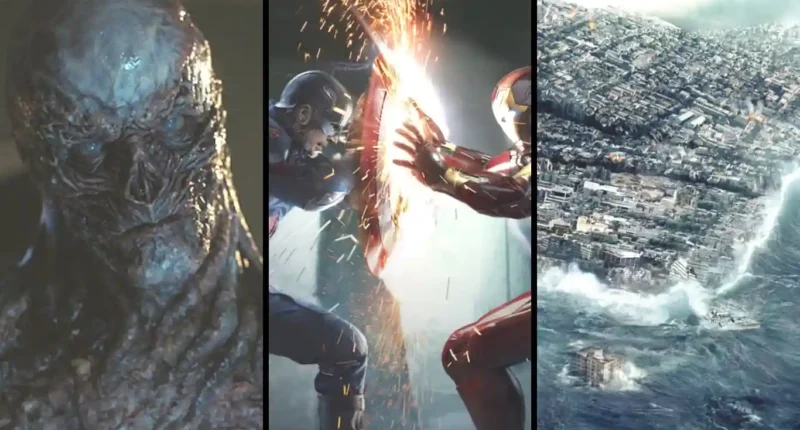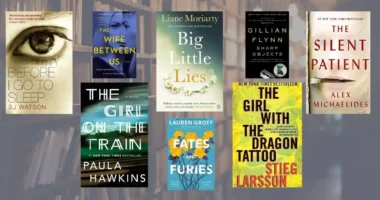Types of Villains: Antagonizers can take many different forms. A story’s main antagonist may occasionally begin as a close ally. Characters who disagree with your main character’s objectives aren’t inherently “evil,” but they do serve one important purpose: They stand in the way of another character’s destiny. Following are 5 common kind of antagonist, along with reminders and examples:
Types of Villains – 5 Common Kind of Antagonist
The Evil Villain
The typical evil antagonist is particularly prevalent in the fantasy genre, but it can be seen in a variety of genres. One well-known illustration is Iago from Shakespeare’s tragedy Othello. Iago uses deception and manipulation to fuel Othello, his military superior until Othello murders his wife out of jealousy after discovering she had an affair.
There are difficulties with creating a destructive, evil opponent. A villain who acts evilly for “evil’s sake” could lack character development and credible motivations.

To make a convincing villain:
- List the justifications for their acts. For instance, in Tolkien’s Lord of the Rings cycle, Sauron has lost his corporeal form and yearns for power that has been reclaimed.
- Describe where their corruption came from. In the prologue, Tolkien depicts Sauron’s ascent and descent. In her Harry Potter books, J.K. Rowling depicts Lord Voldemort’s transformation from Tom Riddle to the most infamous and dreaded figure in the wizarding world. This is especially evident in the second novel.
- Give them a weak point or vulnerability. These need not be psychological or physical. They might have a plan. For instance, a villain with a gang of opportunistic henchmen is more likely to experience treachery if their supporters are easily persuaded by pecuniary gains.
We don’t generally anticipate adamant opposition from allies or friends, therefore the next category of antagonist is frequently unexpected.
The Friend-Enemy
When an ally becomes the enemy in a novel, it is especially unexpected. For instance, the warrior Boromir joins the main protagonists’ journey to destroy the One Ring in the first book of Tolkien’s fantasy cycle, The Fellowship of the Ring. Boromir, however, is averse to destroying it and suggests to his friends that they could use its mystical power to vanquish the enemy Sauron or rebuild the city of Gondor. A morally grey figure abruptly switches sides from ally to the enemy as Boromir tries to forcefully seize the ring from Frodo.
Because they demonstrate how simple it is for a “good” character to make a poor decision, the ally-antagonist is a valuable character. It reaffirms the notion that doing good requires active decision-making and is not always simple in the larger context of Tolkien’s story. Additionally, it introduces side conflicts that highlight the danger and corrupting influence of the ring.
Consider the following when creating an ally-antagonist:
- Display the personality flaws that account for their actions. Being a warrior, Boromir is accustomed to employing force to uphold his values and is headstrong.
- Give them strong justifications for their decisions. The dark power of the ring, in Boromir’s opinion, could be used for good. Ally-antagonists bring nuance to the binary opposition of “good vs. evil.” They demonstrate how quickly people can make bad decisions that have unfavourable consequences. Some people also call this kind of antagonist a “hero antagonist” because they could be driven by admirable principles. This describes Boromir’s intention to improve his city. Given that it seems like he has good intentions, the noble or virtue of this underlying aim makes his actions more tragic.
The Interfering official
In terms of the plot, an antagonist’s role is to obstruct the main character from achieving their primary objectives. Therefore, a meddling authority figure can be used to introduce obstacles and complexities that make life more difficult for your protagonist.

The main plot role of the interfering authority person you design could be:
- To depict the essence of authority and power in the society of your novel (for example, how little power people have faced with totalitarian leadership)
- To demonstrate how cultural norms or practices conflict with the aspirations of your character (for instance, traditionalist parents who reject a “love match” marriage in romance).
- In Nicholas Sparks’ romantic suspense novel The Notebook, Allie’s mother serves as a prime example of this kind of opponent. Allie comes from a rich family, but Noah, the love of her life, is a laborer. Allie’s mother conceals love letters from Noah to Allie due to her authoritarian and class-conscious personality.
This story point demonstrates how the intervening authority antagonist might obstruct your protagonist by acting selfishly or morally.
A border patrol agent who holds up characters would be another illustration of a meddling authority adversary. Maybe they’re a power-hungry bureaucrat who stalls your heroes on purpose just because they can. If the main objective of your characters at this point is to arrive on time for a meeting or other function, then this would make a good secondary adversary.
Nature’s Power
The “force of nature” is one of the few classes of antagonists that is not required to have a specific motivation. When you consider disaster literature and movies, you probably think of Jaws’ erratic shark attack. This type of enemy is sometimes referred to as the “beast,” but it need not be a living or sentient creature. An opponent in a survival story could be something as unintentional or unmotivated as the perilous mountain range your character must traverse.
To develop an engaging and compelling “irrational force of devastation”:
- Be unpredictable with it. For instance, during a challenging mountain climb where the terrain itself is your adversary, sometimes clouds roll in blocking eyesight and making the journey more difficult.
- Change the level of resistance. Create the occasional unexpected rockfall or reassurance-bringing plateau on a challenging mountain ascent.
- Make the threat tangible. The only way to make a shark or other enemy frightful and suspenseful is to demonstrate what would happen if you failed to defeat them. Someone might trip and fall or get their leg bit off.

The Internal Enemy
In a sense, the protagonist and antagonist are the same in a story when a character’s primary conflict is internal (such as drug addiction). The primary struggle is internal, as opposed to external, and involves just one character.
Conclusion
An adversary can take many different forms, all of which add compelling conflict and antagonism to a story. Whichever style you choose, make sure to give each antagonist the same attention to detail and consideration as you would a protagonist.



